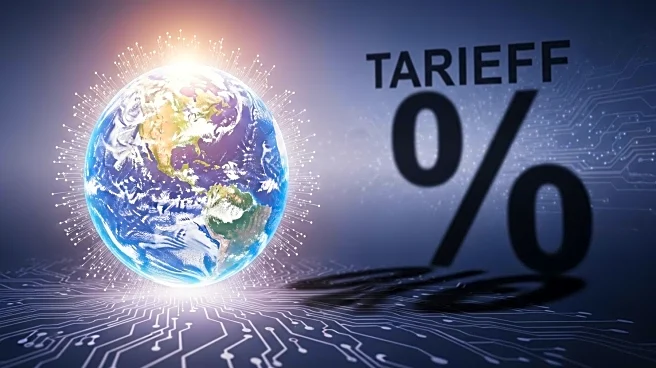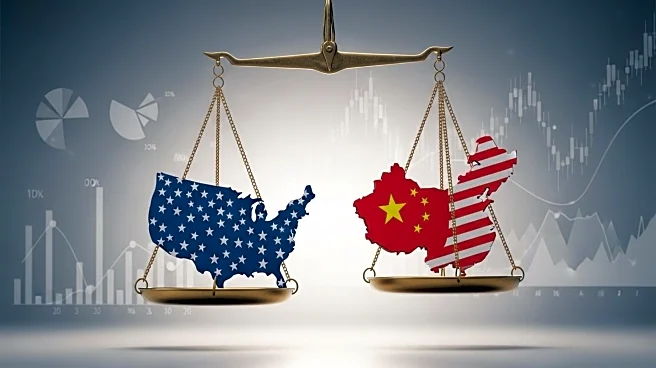What is the story about?
What's Happening?
President Trump announced a new set of tariffs on China, imposing an additional 100% tariff and limiting U.S. exports of software. This decision comes after China restricted its exports of rare earths, a critical component in various technologies. The announcement led to a significant market reaction, with the S&P 500 experiencing a 2.7% drop, marking its worst selloff since April. The U.S. dollar index also fell by nearly 0.7%, while gold prices surged by more than 1.5%. Analysts, including Robin Brooks from the Brookings Institution, suggest that the U.S. may be at a disadvantage in this tariff conflict, as the dollar's decline indicates vulnerability rather than the expected safe haven status during market turmoil.
Why It's Important?
The imposition of tariffs by President Trump has significant implications for the U.S. economy and its trade relations with China. The market's negative response highlights concerns that these tariffs may harm the U.S. more than China, potentially leading to increased costs for American consumers and businesses. The decline in the dollar and rise in gold prices suggest a lack of confidence in the U.S. economic outlook amidst the trade tensions. Additionally, China's control over rare earths, essential for many technologies, gives it leverage in the ongoing trade dispute, potentially affecting U.S. technological advancements and manufacturing sectors.
What's Next?
The ongoing trade tensions between the U.S. and China are likely to continue affecting global markets. The U.S. may face challenges in negotiating trade deals, as China has already responded with measures such as port fees on U.S. ships and an antitrust investigation into Qualcomm. The requirement for licenses to export products containing rare earths from China could further complicate trade relations. Stakeholders, including businesses and policymakers, will need to navigate these complexities to mitigate potential economic disruptions.
Beyond the Headlines
The trade conflict between the U.S. and China raises broader questions about global economic stability and the future of international trade agreements. The reliance on rare earths underscores the strategic importance of these materials and the need for countries to secure alternative sources. The situation also highlights the interconnectedness of global supply chains and the potential for geopolitical tensions to impact technological innovation and economic growth.
AI Generated Content
Do you find this article useful?













